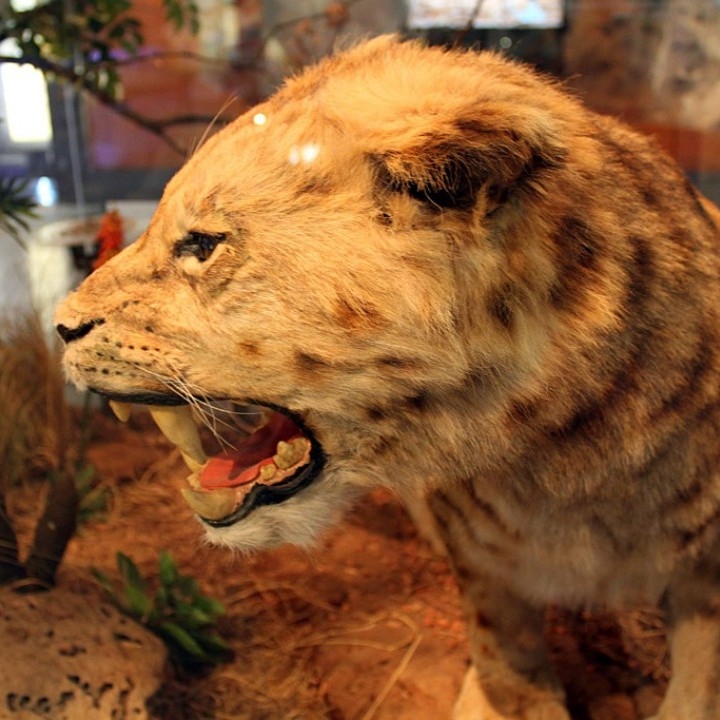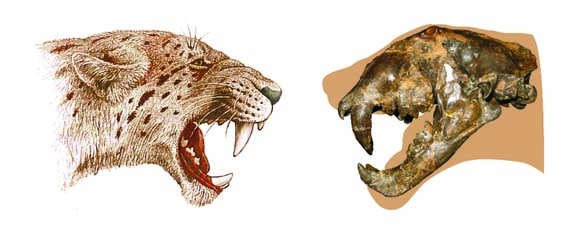Lentegeur Jagplaas
2021 Jagseisoen goed afgeskop |
|
 |
|
 |
 |
 |
 |
Geweer- en Boogjag in Thabazimbi op 3000 ha plaasPryslys
|
|
 |
 |
 |
 |
 |
 |
 |
 |
 |
|
Besoek die SA Jagters Nasionale webwerf.
Aanlyn Lede Administrasie vir nuwe en bestaande lede.
Soek of plaas jou Jagbestemming op die SA Jagters Jagbestemmings-databasis
| 29 Apr 2025 07:00PM - 09:00PM Lede vergadering |
| 03 May 2025 Durban Deep Skietdae |
| 13 May 2025 06:30PM - 08:00PM Bestuursvergadering |
| 17 May 2025 Danielsrust Skietdae |
| 27 May 2025 07:00PM - 09:00PM Lede vergadering |
| 07 Jun 2025 Durban Deep Skietdae |
| 17 Jun 2025 06:30PM - 08:00PM Bestuursvergadering |
| 21 Jun 2025 Danielsrust Skietdae |
| 24 Jun 2025 07:00PM - 09:00PM Lede vergadering |
| 05 Jul 2025 Durban Deep Skietdae |
Ons tak skietdae ruil om vir 2025. Ons skiet nou by Durban Deep op die 1ste Saterdag van die maand, en by Danielrust op die 3de Saterdag van die maand.
Daar is nou ‘n opsie om die Toegewyde Sportskiet kursus aanlyn te voltooi deur gebruik te maak van die lede administrasie webwerf. Hou die kalender dop vir ons volgende toegewyde jagterkursus.
Ons maandelikse ledevergaderings vind steeds plaas op die laaste Dinsdag van elke maand. Daar is sprekers vir die aande gereël wat interessante en wye temas dek.
April maand is maar stil aangaande ons Wesrand kompetisies. Ons bied steeds skiettabel oefeninge by al ons geleenthede die maand. Praat met die bestuur op die dag as u ‘n buitengewone oefening wil uitprobeer. Hulle sal met graagte u uithelp.
Hou ook ons webwerf dop vir jagplase waar ons lede al gaan jag het.
Mooi loop
2025 Wesrand Kalender / Calendar
2021 Jagseisoen goed afgeskop |
|
 |
|
 |
 |
 |
 |
Geweer- en Boogjag in Thabazimbi op 3000 ha plaasPryslys
|
|
 |
 |
 |
 |
 |
 |
 |
 |
 |
|
 Our Branch logo depicts an artist's impression of the sabre-toothed cat (Dinofelis) of which a number of fossilised partial skeletons calculated to be up to 4,5 million years old, were found on Bolt’s Farm in 1947/1948. Bolt's farm is situated 2,5km south-west of the world renowned Sterkfontein caves. The Sterkfontein caves are part the 53,000ha Cradle of Humankind World Heritage Site, one of eight such Sites in South Africa, and only a stone's throw away for our doorstep in a north-westerly direction.
Our Branch logo depicts an artist's impression of the sabre-toothed cat (Dinofelis) of which a number of fossilised partial skeletons calculated to be up to 4,5 million years old, were found on Bolt’s Farm in 1947/1948. Bolt's farm is situated 2,5km south-west of the world renowned Sterkfontein caves. The Sterkfontein caves are part the 53,000ha Cradle of Humankind World Heritage Site, one of eight such Sites in South Africa, and only a stone's throw away for our doorstep in a north-westerly direction.
By embracing the past of our natural heritage, from a time where there was a much closer and much more dangerous interaction between our pre-historic human ancestors and the pre-historic animals which shared their living space, we also acknowledge our current day direct link to our natural heritage and to our natural environment. City dwelling is a minute and very recent development in the deployment of humans in the context of the geological history of our planet, and it serves us well to know where we as humans and the animals we all admire and work hard to conserve (some we must preserve), come from. It is in that recognition of the age old interactions between, and closeness of humans and the wildlife around us, that we chose our logo. Also in recognition of the fact, as human fossilised remains from Makapansgat show, that the interaction between our ancestors and the wildlife they lived amongst, were much more close than what we can even begin to emagine. We are after all, not like the fossilised Makapansgat hominid specimens show, still on the menu of the big cats that today share our world with us.
The Cradle was home to probably some of the first hunter gatherer forefathers of humans on the planet, and is probably the world's richest sites where the fossilised remains of himinids (human types) were discovered; representing close on 40% of these kind of fossil discoveries in the world.
The Sterkfontein caves are especially well know for the discovery of the so-called Mrs Ples scull (1947) and more recently also the discovery of the so-called Little Foot skeleton (1997). Both representing probably some of the first human-like sub-species on our planet.
Mrs Ples is the nickname for the perfect parts of a fossilized skull discovered by Dr Robert Broom on 18 April 1947 at Sterkfontein caves. The skull became known as Mrs Ples, derived from the word, Plesianthropus, meaning almost human, the name given to this sub-species of hominids by Dr Broom. At the time it was described as “…the most perfect pre-human skull ever found…”.
Mrs Ples is believed to be a distant relative of all humankind (age of skull was dated between 3 and 3,9 million years). The skull has a small cranium (similar in size to that of a chimpanzee), and it unquestionably stood upright, like humans. Although Robert Broom put Mrs Ples in the genus Plesianthropus, is now accepted as Australopithecus africanus, a species first described by Raymond Dart from a skull discovered at Taung.
Australopithecus africanus had an average height of 1,4m, and the brain capacity was approximately 400 – 600 cc. This is a little larger than the brains of Chimpanzees, despite a similar body size, and still not advanced enough in the areas necessary for speech. Compare that to the brain capacity of Homo erectus our human forefather who emerged some 1,8 million years ago, who had a brain size varying between 750 and 1225 cc (almost double the size of that of Au. Africanus). H. erectus (upright man) is believed to the first hominid to use and manipulate fire for his own every day living purposes. Modern forms of Hominids, called Homo sapiens sapiens (current day man) first appear about 195,000 years ago, and portrays an average brain size of about 1350 cc.
But of more importance to us at the West Rand Branch, there is another exciting, less publicly known location forming part of the Cradle, known as Bolt's farm, where a wealth of animal fossils, particularly those of big cats, have been unearthed. These fossilised remains are thought to be between 2,9-million and 4,5-million years old. Fossils of antelope, pigs, elephants and rodents have been found at the same place.
Bolt’s farm is nicknamed the “Kingdom of the Big Cats” because of the discovery of the many fossilised big cat (felid) and sabre-toothed cat (Dinofelis) specimens on the farm. It was the first place where the partial skeletons of big cats were found in Africa (picture shows the partial skull of Dinofelis as discoverd at Bolt's farm).
The first fossils on Bolt’s Farm were discovered by Professor Robert Broom, who pioneered palaeoanthropology in South Africa. In 1947/48, an excavation spearheaded by the University of California discovered three, well preserved Dinofelis skeletons in what they called “Pit 23”. These sabre-toothed cats lived between 5 million and 1,4 million years ago.
A sabre-toothed cat, also misleadingly known as a sabre-toothed tiger, is any of various groups of predatory mammals related to modern cats (or resembling cats) that were characterized by long, curved sabre-shaped canine teeth. These animals belonged to taxa of Machairodontinae (Felidae), Barbourofelidae and Nimravidae (both Feliformia) as well as two families related to marsupials that were found worldwide from the Eocene Epoch to the end of the Pleistocene Epoch, existing for approximately 42 million years. The large maxillary canine teeth extended from the mouth even when it was closed. Despite the name, not all animals known as sabre-toothed cats were closely related to modern felines (cats).
In size Dinofelis were between a modern leopard and a lion, most being about the size of a jaguar (70 cm tall weighing and up to about 120 kg), medium-sized but powerful cats that possessed two prominent sabre teeth. The front limbs were particularly robust compared to the modern cats (even the jaguar). This stout body may implicate a preference for dense or mixed habitats although it may also have been similar to the extant jaguar with its range from forest to open range including wetland. The canine teeth of Dinofelis are longer and more flattened than those of modern cats but less so than those of true sabre-tooths.
Dinofelis fossils and bones have been found in South Africa along with those of the baboons that it possibly killed. Bones from several specimens of Dinofelis and baboons were found in a natural trap. Dinofelis may have entered the place to feed on trapped animals or may have simply wandered into a location and was not able to escape again. Several fossil sites from South Africa seem to show that Dinofelis may have hunted and killed Australopithecus africanus * since they harboured fossilized remains of Dinofelis, hominids, and other large contemporary animals of the period. Also, since Dinofelis remains have been found near Paranthropus ** fossil skulls in South Africa, a few of which have peculiar twin holes in their crania matching the Dinofelis upper canines' spacing almost exactly. It is thus possible that Dinofelis was preying on robust hominids as well.
It is thought that the gradual disappearance of the forests in which Dinofelis hunted may have contributed to its extinction at the start of the ice age (approximately 1,5 million years ago).
* Australopithecus africanus was an early hominid (human type), who lived between 3,03 and 2,04 million years ago in the later Pliocene (geological epoch of between 5 million and 2,5 years ago) and early Pleistocene (geological epoch of between 2,5 million and 11,700 years ago). In common with the older Australopithecus afarensis, Au. africanus was of slender build, or gracile, and was thought to have been a direct ancestor of modern humans. Fossil remains indicate that Au. africanus was significantly more like modern humans than Au. afarensis, with a more human-like cranium permitting a larger brain and more humanoid facial features. Au. africanus has been found at only four sites in southern Africa — Taung (1924), Sterkfontein (1935), Makapansgat (1948) and Gladysvale (1992).
** Paranthropus is a genus of extinct hominins (human types). Also known as robust australopithecines, they were bipedal hominids that probably descended from the gracile australopithecine hominids (Australopithecus), 2,7 million years ago.
Sources:
http://www.maropeng.co.za/news/entry/bolts_farm_the_kingdom_of_the_big_cats
http://prominentpeople.co.za/mrs-ples.aspx
http://en.wikipedia.org/wiki/Saber-toothed_cat
http://www.gauteng.net/cradleofhumankind/the_destination/fossils/fossil_sites_in_the_cradle_of_humankind/bolts_farm/
http://en.wikipedia.org/wiki/Dinofelis
http://en.wikipedia.org/wiki/Australopithecus_africanus
(BYLAAG 1.2 A)
(BYLAAG 1.2B)
Geen skuts of toerusting op die skietpunt alvorens die Baanoffisier die opdrag gee:
Notas:
Dankie vir jou belangstelling in die Wes-Rand tak van die Suid-Afrikaanse Jagters- en Wildsbewarings Vereniging.
Persone wat by die tak wil aansluit kan dit aanlyn by secure.sahunters.co.za doen.
Lede-Administrasie - Member Administration
Phildre Lotter : 083 557 2616
e-pos - e-mail : This email address is being protected from spambots. You need JavaScript enabled to view it.
Sien ook die portefeulje verantwoordelike bestuurslede se kontakbesonderhede..
Also see contact detail of other portfolio responsible members.
Tak Bankrekening - Branch Bank Account
Hierdie is die Tak se rekening. Deponeer asb slegs fooie wat vir takaktiwiteite bedoel is in hierdie rekening.
This is the Branch's account. Please only deposit fees meant for Branch activities into this account /
Moet asb nie fooie wat vir SAJWV Nasionaal bedoel is in hierdie rekening inbetaal nie.
Please do not deposit fees meant for SAHGCA National into this account.
SAHGCA (Wesrand / West Rand)
Bank : Nedbank
Tak / Branch: Sandton - Kode Code: 197005
Rekeningnommer / Account number:: 1970790288
We have 48 guests and no members online